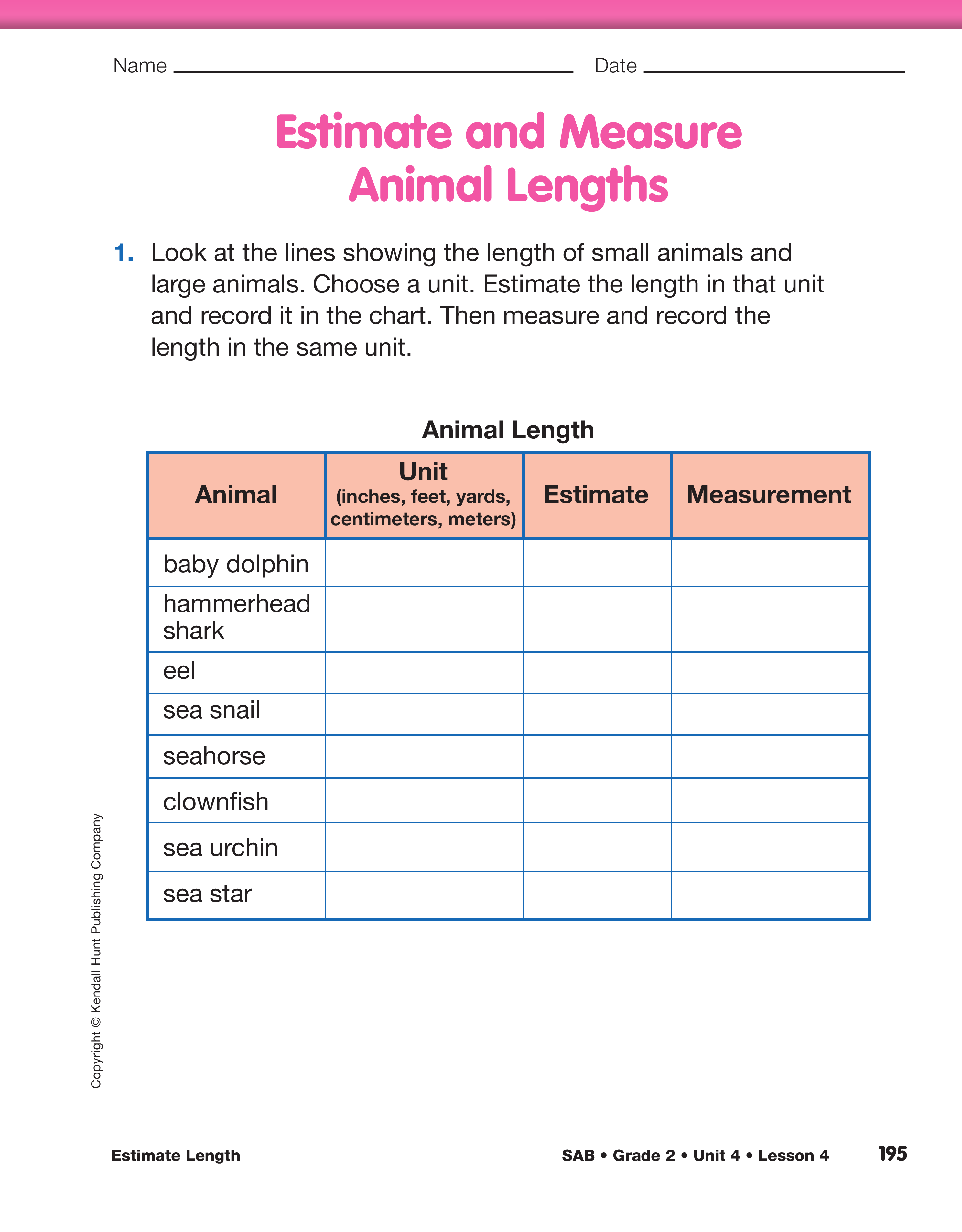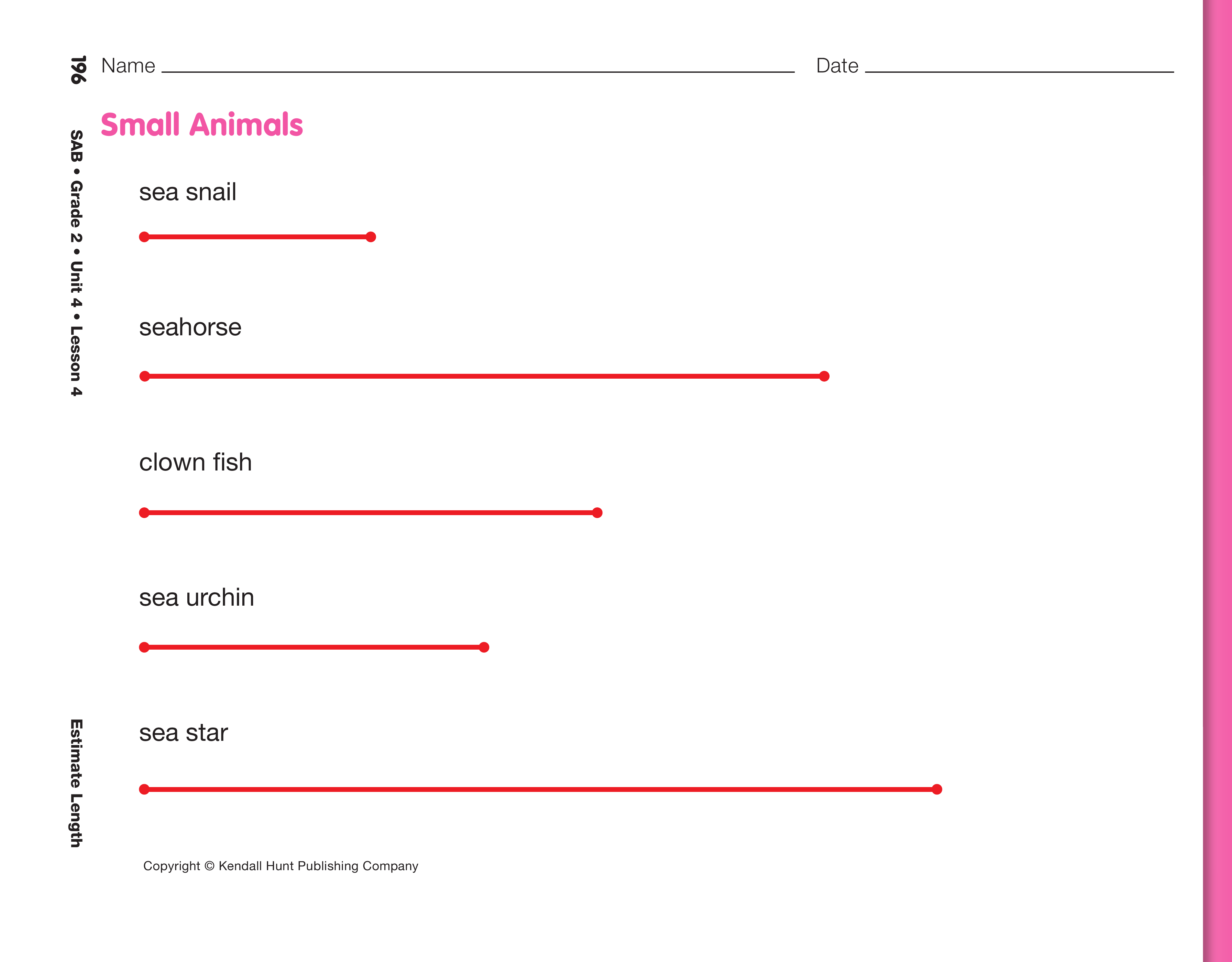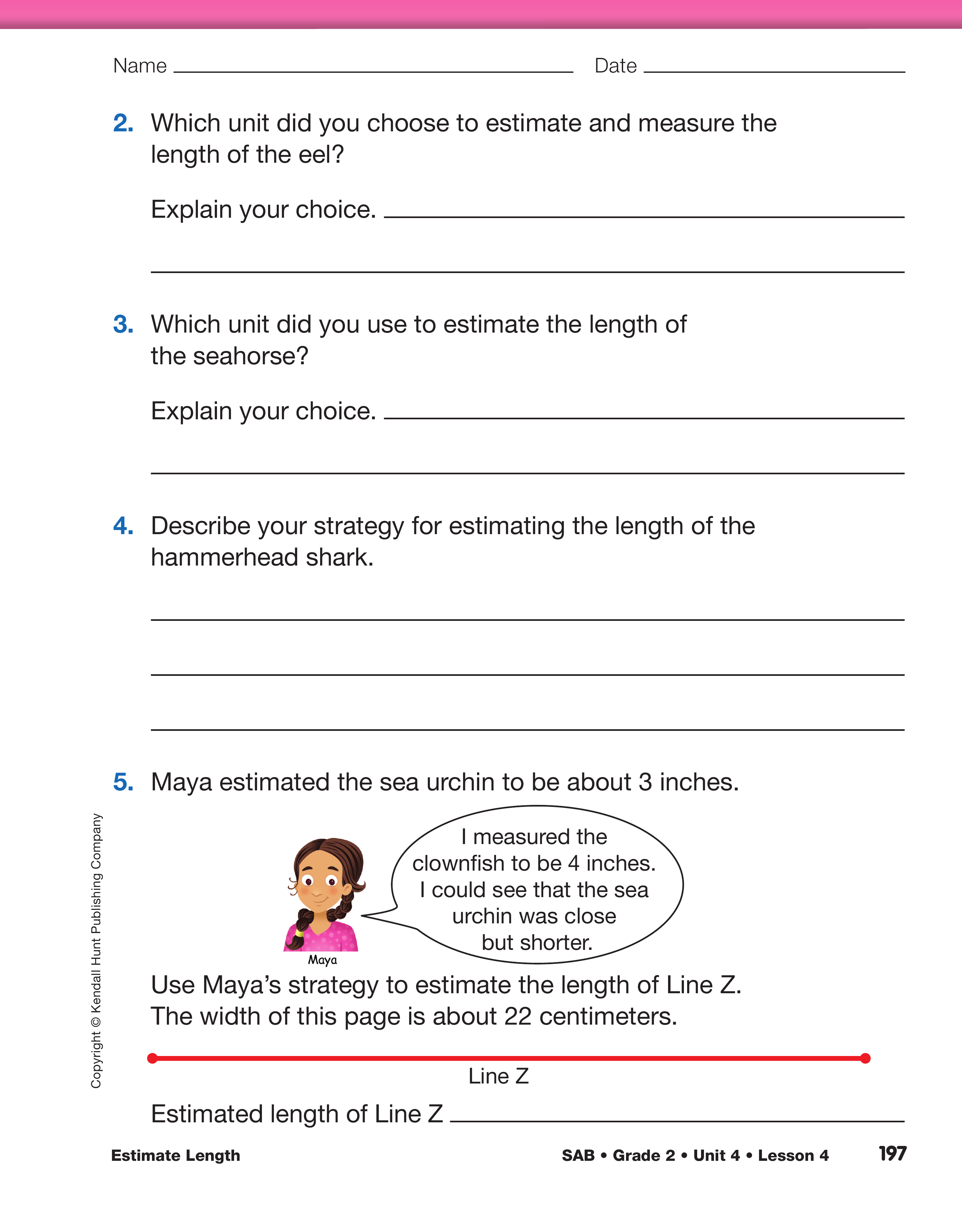Estimate Length
Est. Class Sessions: 1–2Developing the Lesson
Measure Actual-Size Animals. Show students the page in Steve Jenkins' book Actual Size with the goliath beetle. Unfold the corresponding length of adding machine tape you prepared and display it where students can easily see it, such as on the board. Ask them to estimate its length.
Ask:
Display a 12-inch ruler. Ask:
Based on what students decide, attach a 12-inch ruler or a 30-centimeter ruler near the beetle adding machine tape. Students will use the ruler as a benchmark or referent as they estimate. Ask students to record their estimates on a self-adhesive note. Remind them to label their estimate with a unit. Then instruct students to tell their neighbor how they found the estimate. As students are discussing, circulate the room listening for different kinds of estimation strategies. See the Content Note for different types of estimation strategies. Students will most likely use a benchmark to estimate this short length.
Ask students to hang their estimates written on self-adhesive notes near the beetle. Select a few students to share their estimation strategies. Record the strategies on a sheet of chart paper titled "Estimation Strategies." See Figure 3 for a sample chart. Students will have an opportunity to add additional strategies later in the lesson.
Ask a student to measure the length of the adding machine tape to find the beetle's actual length. Ask:
Show students the page in the Actual Size book with the saltwater crocodile. Unfold the corresponding length of adding machine tape you prepared, and display it where the students can easily see it. Ask them to estimate its length.
Ask:
Ask students to come to consensus on one unit they will use to measure the length of the crocodile. Depending on what unit students choose, display a 1-foot ruler, 30-centimeter ruler, meterstick, or yardstick near the adding machine tape representing the crocodile's length. As before, ask students to record their estimate on a self-adhesive note and describe their strategy to their neighbor. While students are discussing, circulate the room listening for different kinds of estimation strategies. Students will most likely iterate a unit for this length, but some students may also decide to develop a benchmark based on lengths they have measured previously.
Ask students to hang their estimates written on self-adhesive notes near the crocodile. Select a few students to share their estimation strategies. Record the strategies on the Estimation Strategies chart started earlier.
Ask a student to measure the length of the adding machine tape to find out the crocodile's actual length.
Ask:
Introduce Estimation Stations. Tell students that they will be estimating and measuring the lengths of more animals. Explain that some of these lengths are long and some are short. Display the first page of the Estimate and Measure Animal Lengths pages in the Student Activity Book. If you prepared images of the animals, show them as you introduce the animals listed on the table. Students should remove the Estimate and Measure Animal Lengths pages from the Student Activity Book so measurement can be done on a flat surface.
Orient students to the locations of the longer lengths and to the location of the measuring tools you gathered and prepared. Organize students into pairs. Each student should first choose a unit, make an estimate including a label, and then measure to check the estimate. Students' estimates do not have to match their partner's estimate. Students will need to work with their partner to measure the longer lines. After students are clear about the expectations of the activity, assign some students to the stations with the longer lengths and have the other students start with the Small Animals section in their Student Activity Book [Question 1].
As students work, circulate and ask:
Identify two or three students who have used interesting or different estimation strategies. These students will share their strategies with the class later in the lesson. As students finish, have them answer Questions 2–5. After most students have had a chance to answer Questions 2–5, refer students to Question 5.
Ask:
Ask students to complete Check-In: Questions 6–8 independently. Direct students' attention to Question 8 and ask a student to read the question aloud as you turn to the zebra page in the book Actual Size. Unfold the adding machine tape and attach it to the board. Tell students they will use the length of the displayed adding machine tape to answer Question 8. Attach a meterstick, yardstick, 12-in. ruler, and centimeter ruler to the board as referents.


















